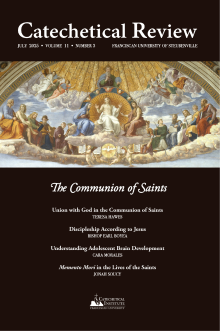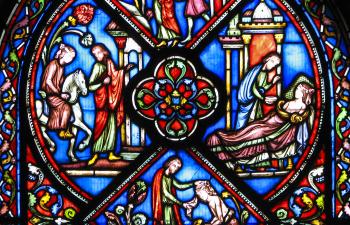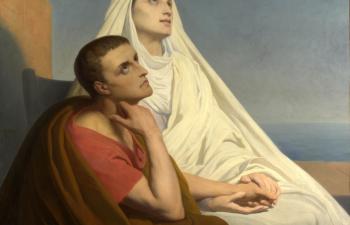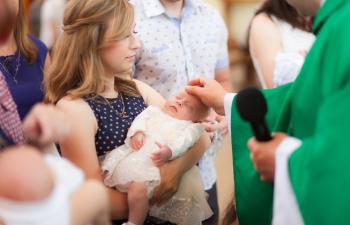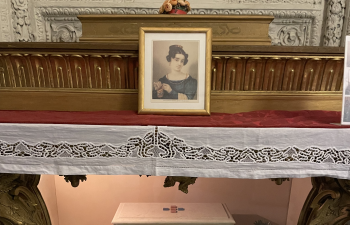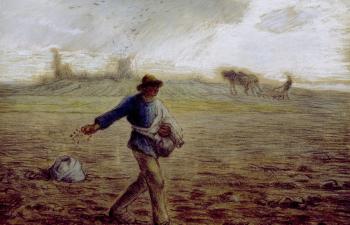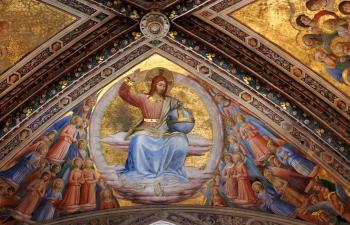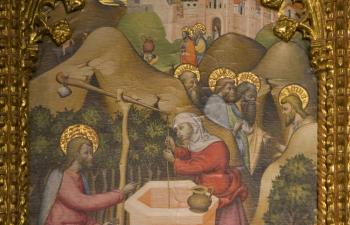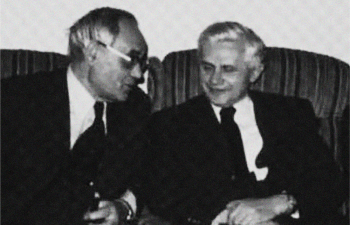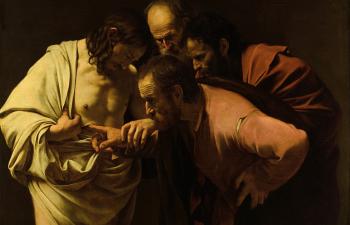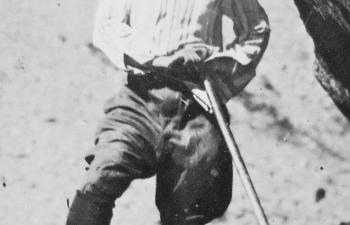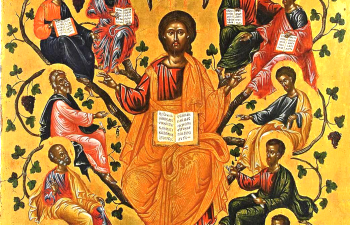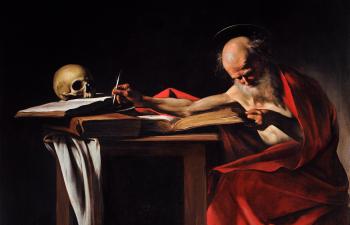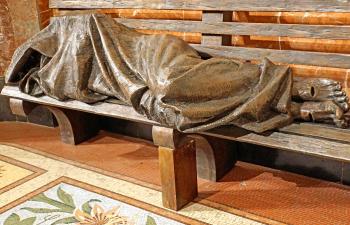To view a full resolution of this artwork on a smartboard, click here.
The renowned italian painter Caravaggio (1571–1610) was active in Rome for most of his artistic career. He was widely known for his dramatic use of lighting, a technique that had a profound influence on the Baroque period of art history. He was a master of chiaroscuro, the use of strong contrasts between light and dark. He used this technique to create a sense of depth and realism that made his paintings deeply moving.
The dramatic intensity of Caravaggio’s work mirrored the intensity of his personal life. We know about much of Caravaggio’s life through the extensive police records that documented his disorderly conduct. He was notorious for his brawling and arguments with not only his peers but also those in authority. His volatile temper culminated in the murder of Ranuccio Tomassoni over a bet on a game of tennis. Caravaggio knew very well the effects and darkness of sin. He was a man who struggled between darkness and light in his personal life. We see that same tension vividly portrayed in his paintings.
One of Caravaggio’s most striking works, The Incredulity of Saint Thomas (1602), visually captures the Gospel of John’s account of Thomas’s doubt and growth in faith. According to the Gospel of John, Thomas was not present when Jesus first appeared to the other disciples after the Resurrection. Unwilling to believe their testimony, Thomas declared, “Unless I see the mark of the nails in his hands and put my finger into the nail marks and put my hand into his side, I will not believe” (Jn 20:25). Caravaggio captures the transformative moment of Thomas encountering the risen Christ.
The rest of this online article is available for current Guild members.
This article is from The Catechetical Review (Online Edition ISSN 2379-6324) and may be copied for catechetical purposes only. It may not be reprinted in another published work without the permission of The Catechetical Review by contacting [email protected]



